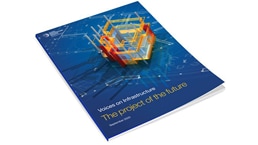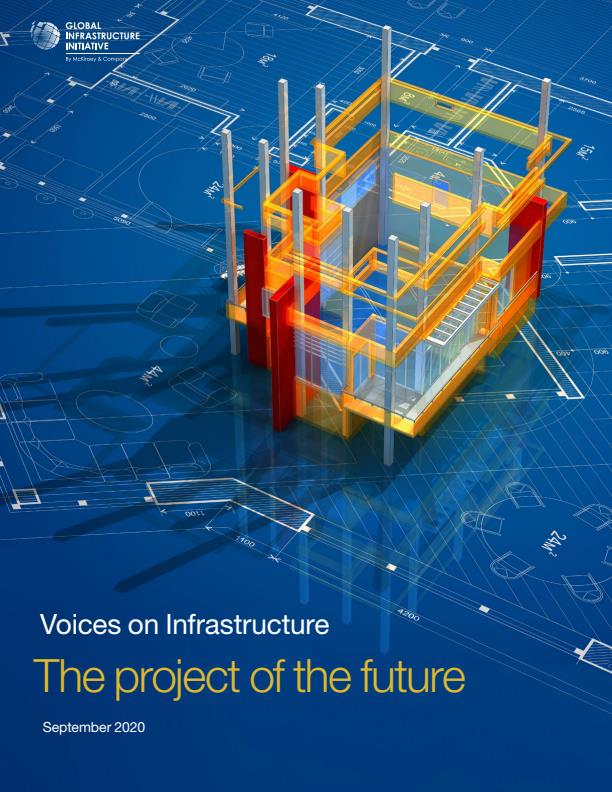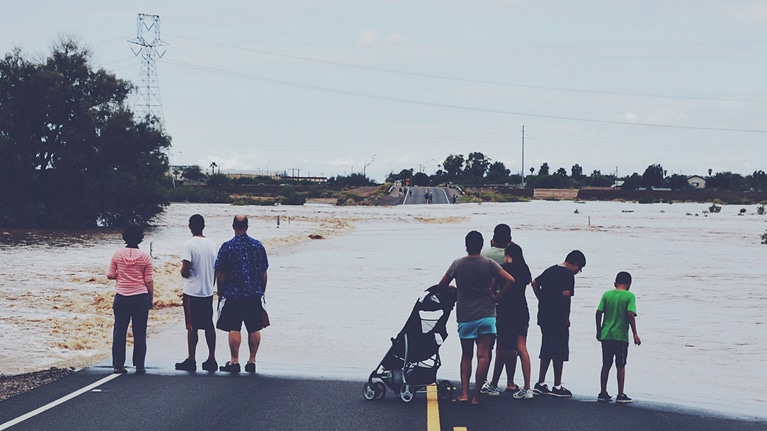Infrastructure faces an unprecedented threat from climate change over the next several decades. As described in a recent McKinsey Global Institute (MGI) report, the socioeconomic impacts from physical climate risk—that is, floods, fires, excessive heat, and storms—are occurring with greater frequency and severity, leading to prolonged disruptions far more often than many business leaders realize.1 And infrastructure is not immune. Every asset is designed to withstand a climate threshold, such as a certain depth of flood water. As climate risk increases, those thresholds will be exceeded, and the effects will be nonlinear as damage rapidly flips from minimal to critical.
If climate hazards increase as projected, they could cause significant disruptions to entire physical and socioeconomic systems. For example, in a high-emissions scenario, the MGI expects that in Ho Chi Minh City, rising sea levels between now and 2050 would triple the economic cost of infrastructure damage from a 100-year flood—while the cost of other real-estate damage would increase sixfold. Likewise, flight groundings resulting from extreme heat would increase tenfold across the globe by 2030 and nearly a quarter by 2050,2 affecting major international airports such as Dubai and Kuwait City. Grid outages resulting from excessive heat are also likely to be much more common and severe. Cities and countries that have not yet experienced extreme climate-related events may find themselves caught off guard. Take Bristol, England, where current defenses could fail to protect the city’s most vital urban infrastructure by 2065 as extreme flood risk rises, increasing the economic impact of flooding from millions of pounds to billions of pounds.
Industry players will want to prepare for the growing vulnerability of today’s infrastructure assets as well as the increasingly complex web of dependencies, whether intrasector (such as energy systems failing from the loss of critical substations) or intersector (such as data centers relying on grid electricity). Moreover, the industry plays a critical role in not only protecting existing assets but also helping societies adapt to inevitable changes and mitigate damage from physical climate risks, from reconceiving flood defenses to designing new water-treatment plants.
As physical risks become more widely recognized and climate-related hazards start affecting more assets, all major infrastructure players will need to understand what these changes mean for them. And because of inertia in the geophysical system, the impacts forecast to 2030 are likely locked in based on historic emissions. Business as usual is no longer an option. Infrastructure players will want to understand the risks in their assets and portfolios, focusing on durability as well as efficiency while capturing opportunities that arise from adaptation—and rethinking funding models.
If infrastructure systems fail, people will suffer. That means cultivating resilience now across the infrastructure industry.
Would you like to learn more about our Capital Projects & Infrastructure Practice?
Understand the risks in assets and portfolios
Infrastructure assets and portfolios of various kinds—and in a wide range of geographies—are exposed to underappreciated climate risks. Even portfolios that appear to be diversified by geography and asset class may in fact be exposed to systemic risks. And as with the city of Bristol, assets that have not historically been susceptible to weather-related hazards may soon be at risk—including public transport in Boston from flooding, airports in the southern United States from excessive heat, and electrical distribution in Portugal from wildfires.
Infrastructure investors are facing the reality that, in time, climate risks could depress returns from infrastructure assets. Thus, as physical climate risks become more broadly understood and accurately projected, capital allocators will increasingly demand visibility into climate risks in portfolios—as Larry Fink, founder, chairman, and CEO of BlackRock, suggests in his 2020 annual letter3—and investors will start pricing climate risks into asset valuations.
We can no longer assume that the climate of the future will look like the climate of the past. Instead of using historical standards with safety margins, industry players will want to assess against a range of future climate scenarios. Fortunately, extensive data and sophisticated tools allow organizations to simulate these risks and understand risk exposure at a high level of specificity. For example, climate projections and flood modeling can help in understanding how many centimeters of water might flood a substation or an airport—or which parts of an electrical-transmission system might be vulnerable to wind damage. With a better understanding of the technical limitations and economic impact of downtimes, organizations can create fact-based estimates of how much climate change–related disruptions could cost.
Design to last
Industry mindsets are likely to change to incorporate this new risk. For instance, infrastructure players will want to evaluate large capital projects to reflect the probability distribution of climate hazards in a specific location, and how that distribution may change over time. They will also need to evaluate scenarios that could change the cost of capital for exposed assets, contractual responsibilities for major climatic disruptions, or even the underlying citizen demand for the service an infrastructure asset provides.
Increasingly, infrastructure planners and builders will be expected to incorporate climate change–related durability and hardening measures into the design and construction process. Underwriting assumptions, investment-committee memos, design choices, and acquisition or exit decisions will benefit from a practical and fact-based understanding of climate risk. Projects may need to be redesigned to strengthen climate-change resilience; for example, there are parks that serve as drainage in Shanghai and road tunnels that double as flood tunnels in Kuala Lumpur. If perspectives on the resilience imperative of infrastructure shift, so too will asset mixes, such as by moving toward more distributed energy assets.

Voices on Infrastructure: The project of the future
Capture opportunities from rising demand for adaptation
Infrastructure is on the front lines of challenges associated with physical climate risks—and it is also on the front lines of creating solutions. Many have viewed sustainable, low-carbon, resilient infrastructure as too costly, but when faced with the realities of climate change, it is clear that the investment is not only justified, but necessary.
The need for adaptation over the coming years is enormous—cities will need flood walls, energy utilities will need to make resilience investments, water infrastructure will need to be upgraded, and real estate will need to be hardened. And all of this must happen in an ever more hostile climate. Thus, the ability to meet the shifting demands and overcome the challenges created by climate change will become a competitive advantage as much as a socioeconomic imperative. The infrastructure players that lead the way now can mobilize investors and provide the stream of capital necessary to achieve that imperative.
Innovate to secure funding and financing
The front-runners in the next normal will be those who can innovate on partnership models, financing mechanisms, and delivery approaches. Those who can build better but also cheaper in hotter or wetter climates will be better positioned to capture share. Those who can shift to innovative models linking remuneration to better uptimes on more resilient assets will be more likely to profit. Regulators may start to adopt a longer-term view on total lifetime expenditure for these assets to thrive. In particular, in the current COVID-19–driven economic environment, the challenges of finding financing may be exacerbated. However, in some jurisdictions, governments are funding climate adaptation projects as part of their COVID-19 recovery planning.
As the investment pool expands, infrastructure players are likely to find that value arises not only from financial gains but also from deeper social capital, higher trust, and stronger networks that together create meaningful, lasting impact.
Several efforts are underway to support the sector in making informed decisions. For example, the Coalition for Climate-Resilient Investment has convened a range of organizations across the infrastructure-investment value chain to develop tools and standards for incorporating climate risk into decision making. The coalition is developing a framework and methodology for physical risk pricing to help channel investment toward more resilient infrastructure—which is necessary for developing and advanced economies alike.
Infrastructure players are already battling increased risks related to climate change, and these risks are set to balloon over the next few decades. Responses will need to be fundamentally different than historical approaches to developing and financing infrastructure. The answer is not simply to build taller walls. Players must act now, and in new ways, to meet the need and prevent irreversible damage and loss—both to infrastructure assets and people across the globe.
The extent to which COVID-19 will affect the nature of the world’s infrastructure needs is yet unknown. However, the fundamental need to deliver that infrastructure will remain, and with it the importance of exploring, adopting, and implementing creative ways for public- and private-sector participants to partner, collaborate, and collectively make the best use of their respective resources to bridge the infrastructure gap.
This article was part of the Global Infrastructure Initiative’s September 2020 issue of Voices.


